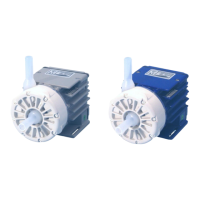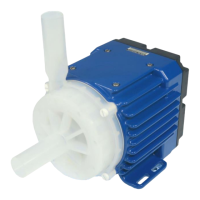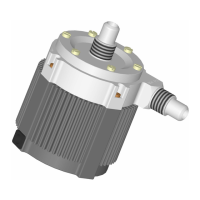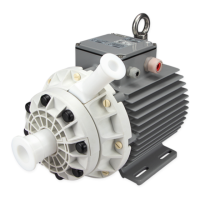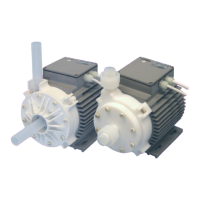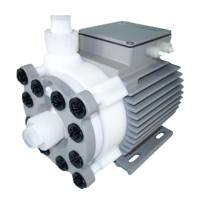3.5 Hydraulic Circuit Design
Following general design rules for the hydraulic circuit shall be considered for a robust operation of the pump
system and optimum priming behavior:
1. The general rule for optimum priming behavior is to minimize the pressure drop in the inlet circuit and avoid
negative pressure at the inlet of the pump head.
2. Minimize tubing length at the inlet of the pump head and maximize the ID (not smaller than the pump head
inlet ID of 6.4 mm for LPP-30.1/3 and 9.5 mm for LPP-30.6 is recommended). This reduces the pressure drop
and the tendency of cavitation.
3. Avoid any restrictions, valves, elbows, bended tubing and sharp edges at the inlet circuit of the pump head,
which potentially causes cavitation resulting in gas bubble collection in the pump head with the danger of
priming loss.
4. Place the pump at the lowest point of the hydraulic circuit. Optimum is as much as possible below a tank or
reservoir. This optimizes priming behavior and removal of gas bubbles.
5. Keep the liquid level in the reservoir tank or bag as high as possible, which increases the inlet pressure of the
pump head and minimized heat up of the liquid.
6. In general, the pump system placement and circuit shall be designed in a way that gas bubbles can leave the
pump housing and that the pump head remains primed.
7. To minimize heat up of the liquid the overall pressure drop in the hydraulic circuit shall be reduced as much
as possible.
8. It shall be avoided to pump longer times against a closed valve, which can cause heat-up of the liquid.
9. At flows < 1 l/min it is recommended to use a bypass loop to assure that sufficient flow runs through the pump
head to wash-out gas bubbles.
10. At higher liquid temperature above rules become more important due to higher cavitation tendency of the
liquid.
11. Load and stress at the inlet and outlet by heavy tubing and inexact mounting alignment shall be avoided (see
Figure 25) as this can cause leakage issues due to distortion of the plastic pump housing.
Figure 25: Avoidance of stress forces and torques at the inlet and outlet of the pump head
Contact the Levitronix
®
Technical Service department (see Section 8) for more detailed considerations and
support on the design of the hydraulic circuit.
